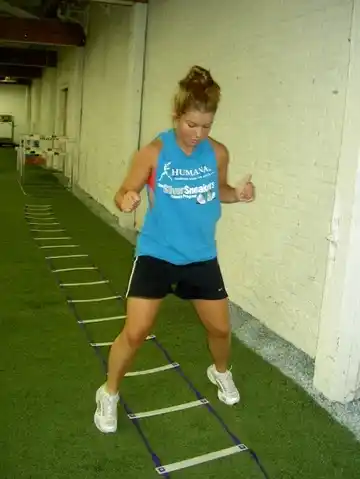One major emphasis that I work on with my pitchers, especially in the Offseason, is their strength from their fingertips down to their toes.
I think it is critical that pitchers have the necessary leg strength because a pitcher without endurance is nothing.
Here are some ideas that you can incorporate into your routine to help strengthen both your legs and arms.

Besides the normal weight training and conditioning program, a couple of drills that specifically work the legs are:
1) Distance Throwing: You can work in a progression of 45 – 65 feet throwing five pitches at five foot intervals starting and ending at 45 feet.
2) Hard and Fast: In this drill, both the catcher and pitcher have a ball and as soon as the pitcher pitches the ball, the catcher immediately throws the second ball back.
3) Pitching Standing Long Jump: Starting with your feet about shoulder width apart, slightly bend your kneesand use your arms so you can jump out, not up, as far as possible with your stride foot while your pivot foot drags behind on the ground. This mainly works again on leg drive
4) Weight-Back Drill: A drill for leg drive that involves using a weight lifting belt with a rope or something to attach to the back. Here, the pitcher works on driving their legs while either doing the long jump drill or simulating a complete throwing motion.
While standing behind the pitcher, holding the rope, keep constant tension throughout the motion, which means you either let the rope slide through your hands or move with the pitcher.
Some drills that we incorporate for our wrist and arms are as follows:
1) Wrist Snaps: During our workouts, the girls always start with wrist snaps, not only to see the rotation of the ball, but for strength.
2) We also use what is called a “For Arms” strengthening device that allows for several different ways in which to strengthen your forearms.
3) Bat Twists: Simply using a bat for wrist strength, hold the bat in front of you, horizontally, and have one hand try and rotate the bat forward while the other is trying to rotate it backwards. You switch the rotation of your hands back and forth so each are always opposing each other.
4) Weighted Balls: One of my favorites is taking a four pound medicine ball and tossing it back and forth, making sure that you catch the ball with one hand only. You may alternate hands to work bilateral strength. Of course, you should vary your weight, depending on the age level with which you are working. This works your muscles from your neck, down to your finger tips.
The offseason is a crucial time for pitchers to build on their overall strength and conditioning. Hopefully some of these drills will help develop your pitcher’s overall strength.